Abstract ::pe PR::
The Abstract library by Phalkanubba Rath contains organic, flowing, and almost
ever-changing effects that are perfect for animated backgrounds.
etc.
Ethereal Waves
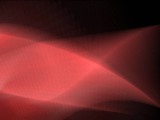
Best when placed near the bottom of the stage. This emitter will continually change for over
1500 frames, due to a slowly-changing emitter "Spin" graph. The particle type "size over life",
"weight over life", and "spin over life" are animated as well.
For some nice variations, try increasing the visibility a little bit, and try using a different
particle shape. To remove the "edges" that are visible in this emitter, export the triangle shape
image (on the "Change Shape" page of the "particles" page of the emitter properties dialog),
bring it into your favorite paint program and blur it a bit. Then save and re-import into
pIllusion.
Note that if you try shapes of different sizes, you'll need to change the shape reference point too.
Echo Waves
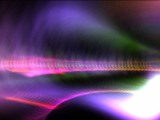
This emitter does not continuously change -- it repeats on about a 50-frame cycle. Changing the reference point
is the best way to modify this effect, along with changing the particle angle (on the "behavior" tab of the
"particles" page).
One tip when working with any emitter: Add the emitter to the stage, then open the properties dialog for the stage
emitter -- do not open the properties dialog for the library. This will prevent you from destroying the original copy of the
emitter. Use the "Add to Library" button when you want to put it in the library.
Green Sweeps

Changes continuously over 1500+ frames, but is most interesting in the early stages -- between frames 200 and 600.
You may want to set the preload value to 200 or so to get it going sooner, as it can take some time to develop.
As many of the emitters in this library, it stretches the particles by using one small "size x" or "size y" value, and
one large value. This means that changing the particle shape doesn't have a very big effect. Changing particle
angle may.
Swooping Waves
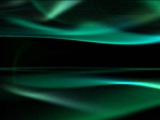
Another cyclic effect, with a period of about 50 frames (like "Echo Waves" above).
Some nice variations can be made by using any of the "Bubble" particle shapes, and changing the reference point. Of course
you can always change the particle color gradient as well -- that goes without saying for all of these emitters.
Twirling Bars 01
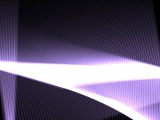
This one is cyclic and ever-changing at the same time, if that makes sense. The sets of bars are added on a regular
cycle, but the bars behave differently over time -- mainly due to an animated particle type "spin" parameter.
You can change the number of bars in each set using the first value in the "emit at points" section of the
emitter properties dialog. To smooth out the effect, export the particle shape, blur it in a paint app, and
import it back in.
One thing to keep in mind when blurring a particle shape is to make sure that the black background is true black at
the edges of the image. You may need to darken the image, and/or adjust its contrast to make sure that the edges
are 0,0,0 black. Even a value of 1,1,1 will cause the edge of the particle to be visible in some circumstances.
Twirling Bars 02
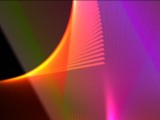
Starts out as a rising "edge" from the bottom, but changes quite drastically over time into a nice
twirling "mesh" of bars. "Spin over life" is the reason for this. This emitter is notable in that it
also animates the "Tint Strength" to vary the overall colors over time.
A nice variation can be made by switching to the "Boomer" particle type and decreasing the "Size" property
somewhat. Adjust reference point too.
Twirling Bars 03
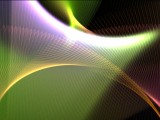
Similar to the previous emitter (Twirling Bars 02) but it doesn't start slowly like 02 does -- this
one has plenty of movement from the start.
One thing about these emitters that use "emit at points": changing the "number" property doesn't always give
the results you're expecting. You may need to change the "emit at poinst" value instead, or in addition to
changing the "number" value. Changing the "number" value on this emitter makes it pretty wild -- if you increase
it you'll want to either decrease the "emit at points" value, decrease the "visibility" (or both).
Wild Twirls
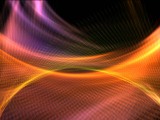
Of the "Twirling Bars" emitters, this is the wildest. A nice variation is to use the "Star3" particle type, and
maybe adjust the reference point off-center.
Another thing to try with some of these emitters that use "intense" particles -- uncheck the "intense" option and
use them on a white background instead of black. Sometimes you can get a really nice look that way.
Twirl Rays
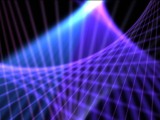
This is a relatively calm emitter, sort of a "string art" or light rays. Adjust the number of rays using the
"emit at points" value.
A great variation can be made by switching to the "Triangle" particle shape.
RGB Bars Swirl

A nice "spiral in" effect, but it takes a while to get interesting. You may want to set the preload value to 200 or so to
make things happen sooner. If you don't like the way it changes colors, you can either edit the particle color
gradient, or increase the "Tint Strength" and select the Tint Color you want.
Moving the Reference Point a little bit can make a big difference too.
Blue Twirl Arcs
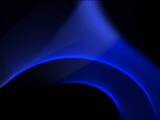
This is a slow-moving emitter that creates dual arcs, then creates a second set later. By changing the emitter
"Angle" value you can get a different look.
A reminder about "intense" particles -- they typically look best on black backgrounds, and will wash out on
lighter colors (they will be invisible on white backgrounds). To fix this, check the "preserve color" option
next to the "intense" option. This will decrease performance.
Double Spin Slow
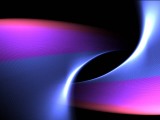
A slowly-changing emitter with some symmetry, it's quite easy to make into many different flowing effects.
Change the particle shape to "Bubble" or "Star" and adjust the Reference Point a little for some great
variations (almost any particle shape that doesn't include too much white will work here).
Edit the color gradient or increase the "Tint Strength" if you don't like the color changes.
Square Rings

This is the first emitter in this library that uses more than one particle type -- one for the
"rings" portion, and one for the "squares". Create some simple variations by turning off one of the
particle types (the "rings" particle type by itself is quite cool). Also adjust the "size" of one
of the particle types.
(You can turn off a particle type by clicking on its icon -- the little star image -- in the hierarchy
window.)
Bars Grow Left
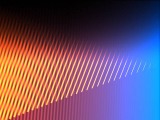
This emitter should be placed at the right edge of the stage, as it grows to the left. Does not repeat, just
keeps slowly changing. You can make some tweaks to the "size over life" graph, and also change the "emit at points" value.
A great variation is to switch to the "Ring" particle shape, then decrease the "visibility" value to 6% or so.
Scrolling Webs

This is an emitter that seems to change continuously, but there are no properties animating to do this (other than
"Tint Strength" which causes the color changes). Because of this, it's an easy emitter to experiment with by
changing size, velocity, etc.
You can select almost any particle shape for this emitter and it will look good, but a super-simple variation is to
just check the "flip x" option on the top of the particles page.
Coils
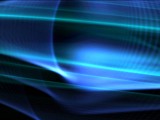
Once this emitter gets going (about 180 frames or so) it repeats pretty regularly. This is another emitter that
can use almost any particle shape -- try "Boomer" or "Oval Ring" for some nice results.
Central Swirls
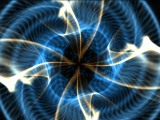
The only "swirly" emitter in this library that grows outward from a central point. Experiment with different particle
shapes, reference points, and "emit at points" values.
Try turning off "intense". Also try switching to the "Bubble" particle shape and decreasing "visibility" a bit.
Spin Out Spin In
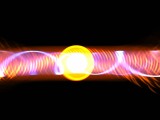
Simple shapes spiral out from the center and back in (or so it appears), bulding up a central disk that gets more
and more luminous over time.
This is a great effect that changes for at least 800 frames. "Emission Range" and particle type "velocity" are the
only properties that animate over time. Change the particle shape to "Boomer" or "Star" for nice variations. Move this
emitter up and down slowly to create a new look too.
Twin Ribbons

Dual "ribbons" curl upward around each other. Compared to most of the other emitters in this library,
this one seems very simple. It's such a graceful, flowing effect that it just had to be included here.
Change the number of lines per ribbon using the "emit at points" value. You can increase the overall
width of each ribbon by increasing the "height" property.
Dot Trails Up 01

A couple of "dot trails" that chase each other up and down in a continually changing column. Changes for
about 1400 frames.
To increase the size of the spiral, increase the "radius" parameter. Since the "radius" is animated, the easiest
way to do this is to scale the graph: r-click in the radius graph, select "scale", then scale the y-values by 200% or
whatever seems correct. Note that after increasing the radius, you may need to increase the "emit at points" value.
Dot Trails Up 02
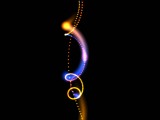
Similar to "Dot Trails Up 01", but different.
Change the "emit at points" value to change the way the spiral moves. To increase performance you can
decrease "emit at points" to 90 or 180, but you may need to increase the "visibility" too. Another cool variation
that takes a little more work: select the "small" particle type, change its shape to "Ring", then scale its
"size" graph by 300% and decrease "visibility" for this particle type too.
Dot Trails In Triple
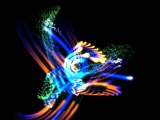
A complex emitter that uses animated particle type "velocity" properties. Difficult to modify in satisfying ways,
but you may want to experiment with the "emit at points" value (which controls the number of "arms" the emitter
has) and possibly changing the particle angle to "align to motion".
Dot Sheet Wave 01
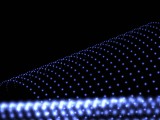
The first of the "wall of dots" emitters, change the "emit at points" value to change the number of streams. The
motion of the streams is due to the emitter "Angle" changing.
One nice variation is to change the particle type to "twoDots01". Performance can be increased by shortening the "Life"
property, but that will change how the overall effect moves.
Dot Sheet Wave 02
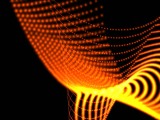
Another "wall of dots" emitter, with more motion than the previous one. Performance can be increased by decreasing
"Number", but the overall effect may change. You may also want to uncheck the "use old number calculation method"
option in the emitter properties dialog to provide better control over the number.
(Ever wonder what that option does? When checked, it uses the pIllusion 1.0 method of calculating the number of particles --
which was incorrect. Changing the "number" value results in a "jump" in the number of particles added, instead of
a smooth change in the number.)
Dot Sheet Wave 03
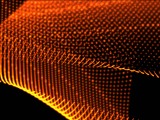
Another "wall of dots" emitter. This one is difficult to modify, so I don't have any specific tips other than
the usual: try different particle shapes and changing the reference point.
Note that all of the "wall of dots" emitters use the "keep particles in order" option, and I'm not certain
if that is needed. I recommend unchecking this option for these emitters, and only checking it again if you
notice a visible change in the emitter.
Dot Sheet Wave 04

A dual twirling wave of dot streams that move upward slowly -- a really nice effect.
Change the way the dot streams move by animating the emitter "Angle" property -- it is already
animated, but add or change data points in the graph, or scale the graph.
Dot Trail Tentacles

This effect takes a while to get going, but when it does it creates multiple streams of dots that appear to
move in 3D space.
Motion blur may add to this effect's "realism". To make things happen sooner, decrease the emitter "Life" value by
half or so, or change the particle transparency gradient so the initial change from black to white is shorter (move
the white key closer to the black key).
Dot Trails Arcs and Loops

A two-part effect, first with a curved "wall" of dots coming in from the left, then later a series of corresponding
"loops" upward. Very nice and simple effect that keeps moving slightly for some time.
Add this emitter at the bottom edge of the stage. Experiment with moving the reference point around to change how the
"wall" and "loops" form. Changing particle shapes not recommended.
Red Green Vapor Squid
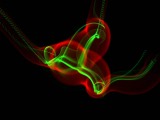
One of the most organic effects ever created with particleIllusion, it's something like a smokey, transparent jellyfish,
with slowly waving tentacles.
Change the "emit at points" value to 1 or 2 for an interesting variation, with higher numbers creating more
"tentacles". I don't think more is better in this case though. Change the reference point for both particle types
too.
Red White Vapor Tubes

Another "vapor" type effect. Again, try changing the particle shape, reference point, or "emit at points" value.
May also want to try increasing the "radius" value to see what happens.





























